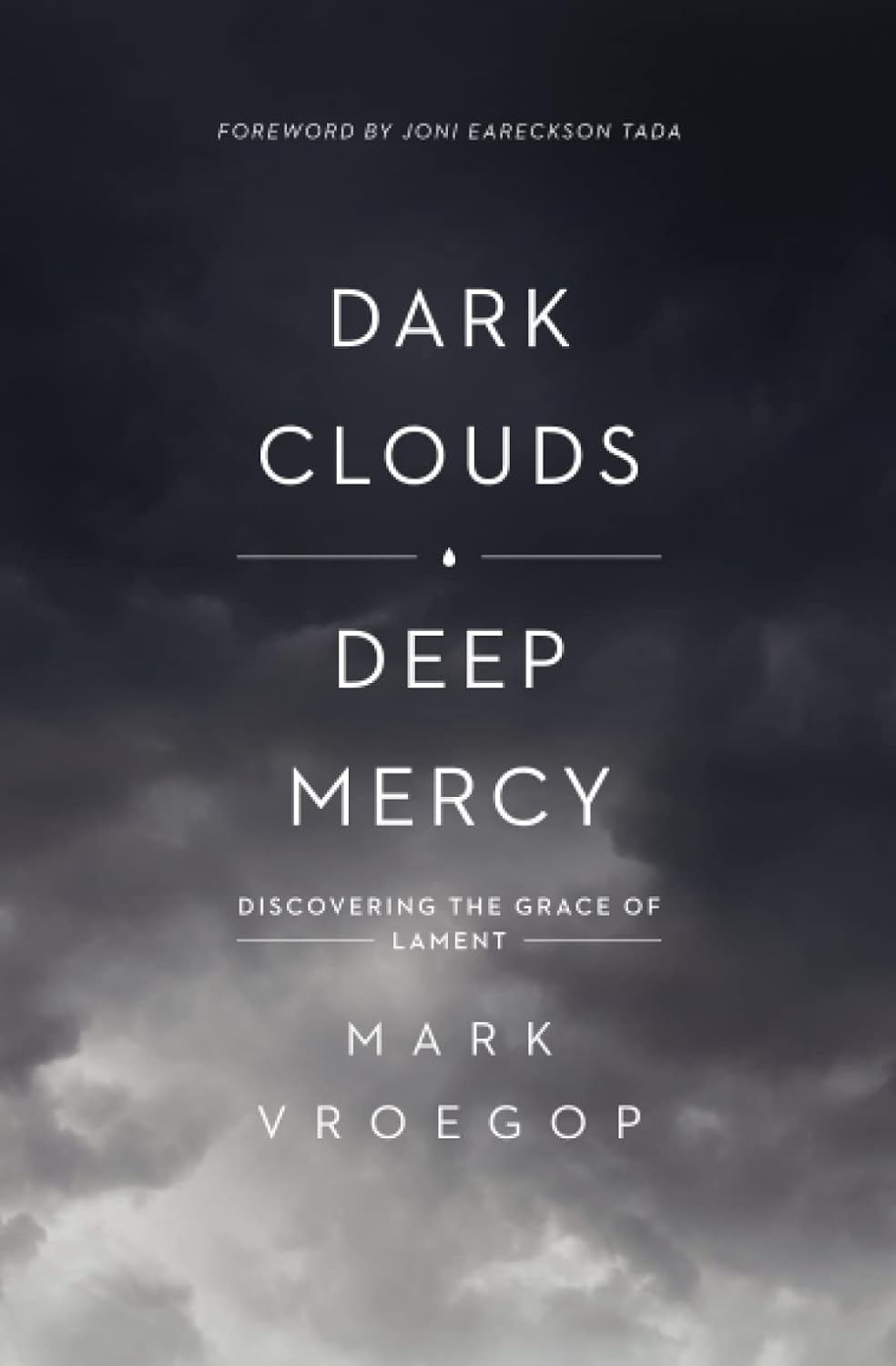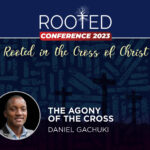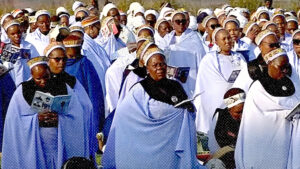The rarity of lament in our lives and churches is, well, lamentable. People who cannot lament are at a loss when it comes to processing pain.
People who cannot lament are at a loss when it comes to processing pain.
Dark Clouds, Deep Mercy is a laudable corrective to this ecclesial and contemporary dysfunction. As a lead pastor, Mark Vroegop doesn’t write as an “armchair” theologian but a “wheelchair” theologian. He is a man well acquainted with sorrow. This book was forged on the anvil of Vroegop’s own grief, following the tragic loss of his unborn daughter. So Dark Clouds, Deep Mercy contains a masterly blend of personal life, rich pastoral experience, and careful biblical exposition. Throughout, Vroegop aims to help Christians rediscover the oft-neglected grace of lament.
The thrust of this book is that the dark clouds of sorrow can break into an experience of abundant mercy via the pathway of biblical lamenting. As such, “lament is a rich and untapped reservoir of God’s grace” (p17).
What Does It Meant to Lament?
Vroegop defines it as “an honest cry of a hurting heart wrestling with the paradox of pain and the promise of God’s goodness” (p21). It is the space between two worlds; as well as a sacred, God-given language. It is how we vocalise our pain and move towards God in worship and trust.

Dark Clouds, Deep Mercy: Discovering the Grace of Lament
Mark Vroegop
Dark Clouds, Deep Mercy: Discovering the Grace of Lament
Mark Vroegop
Lament is how you live between the poles of a hard life and trusting God’s goodness. Lament is how we bring our sorrow to God—but it is a neglected dimension of the Christian life for many Christians today. We need to recover the practice of honest spiritual struggle that gives us permission to vocalise our pain and wrestle with our sorrow. Lament avoids trite answers and quick solutions, progressively moving us toward deeper worship and trust.
Exploring how the Bible—through the psalms of lament and the book of Lamentations—gives voice to our pain, this book invites us to grieve, struggle, and tap into the rich reservoir of grace and mercy God offers in the darkest moments of our lives.
It is how we vocalise our pain and move towards God in worship and trust.
The practice of lament is underpinned by the knowledge of God’s character, especially his sovereignty. It follows then that while “it is human to cry, to lament is Christian” (p32). In reading Dark Clouds, Deep Mercy one becomes awakened to how basic lamenting is to the Christian faith. And Vroegop writes to equip us to become skilled and fluent in this language.
This book is a journey and it unfolds in three main parts.
Turn, Complain, Ask, and Trust
In the first part, Vroegop teaches the reader how to lament. He does so by focusing on four Psalms (Psalms 10; 13; 22; 77). From these Psalms, there emerges a pattern of lament which Vroegop captures in four words: “turn, complain, ask and trust” (p23). In their distress, the psalmists turn to God in prayer; they complain to God; ask for help; and trust in him. This is a borrowable pattern.
This is a borrowable pattern.
In these Psalms, we also see that lament is not the antithesis of praise but the pathway to praise. Vroegop calls us to a kind of lamentation that is biblical, honest and redemptive—not mere ranting, pouting, or venting. That he focuses us on these Psalms also demonstrates that the practice is both biblically and historically rooted. It is not a novel invention.
Learning from Lamentations
In the second part, he writes on learning from lament, which he identifies as a master teacher.
This part of the book is loaded with expositions of the Old Testament book of Lamentations. Vroegop calls that book “the most intense and comprehensive minor key song in the scriptures” (p65). He suggests that in addition to memorialising the destruction of Jerusalem, the extended lament is also meant to teach us something about God, our world, sin, idols and hope.
Lamentations teaches us something about God, our world, sin, idols and hope.
As I read this section, I was struck once again by the emotional rawness and the gutsy honesty found in Lamentations. Vroegop proposes that Lamentations is also the kind of song we sing while living in a world ravaged by sin. As we observe Jeremiah lamenting, we also realise that the best lamenters are those who know how the story ends, thus, “lament dares to hope while life is hard” (p75).
How to Incorporate Lament
The third part of Dark Clouds, Deep Mercy deals with the ‘how’ of living with lament. This section is a treasure trove of wisdom on how to go about incorporating lament into our own lives.
If one were to mistakenly think that Vroegop is an ivory tower theologian, this section expels that error. He is intensely pastoral and practical. He teaches that we can lament big tragedies and small inconveniences.
Vroegop is intensely pastoral and practical.
Vroegop also situates lament in the biblical community arguing that “wherever there are tears, there should be biblical lament” (p105). He suggests ways to integrate lament into grieving, funerals, confession, preaching, song-writing, singing, and even small groups. In writing this section, Vroegop aims to motivate “many more believers and churches to step into the space of people’s pain and community sorrow with the liturgy of lament” (p97).
Pain and Hurt Aren’t the End
In conclusion, this book is an expertly guided journey into lament. It is written with warmth, candour, and the ink of personal tragedy. Individual Christians, pastors, counsellors, and entire congregations would do well to read it.
Pain does not have to end in despair.
If you are in the crucible of affliction, this is your book. It doesn’t offer a simplistic formula for dealing with pain, but rather a pastoral primer and theological guide. It does not claim to be the last word on lament, but it surely fills an important gap.
Vroegop doesn’t romanticise pain. Instead, he reminds us that pain does not have to end in despair. We don’t have to be stoic about hurt because God gives us permission to lament. We lament reverently, but we do so honestly. Best of all, this book teaches us that the telos of biblical lament is the hope the gospel holds out to us. It will not be forever!














